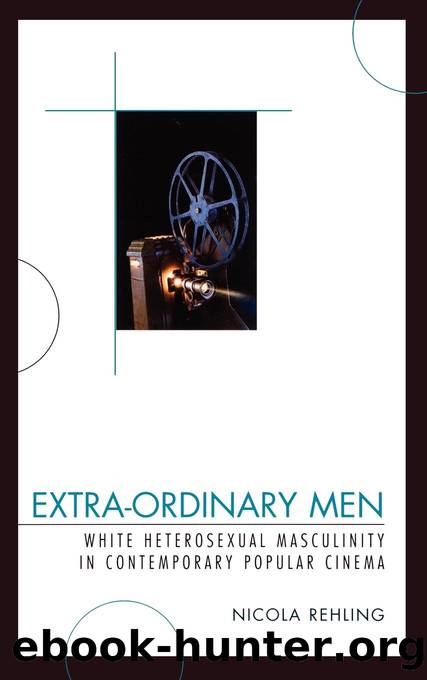Extra-Ordinary Men by Rehling Nicola;

Author:Rehling, Nicola;
Language: eng
Format: epub
Publisher: Lexington Books
Published: 2009-11-14T16:00:00+00:00
The Performativity of Gender and the Subversive Potential of Drag
In her now seminal work Gender Trouble: Feminism and the Subversion of Identity (1990), Judith Butler famously argued that gender was performative. By this she meant that all gender identifications, including normative heterosexual ones, are simulacra, âa kind of imitation for which there is no original,â though it is the kind of imitation that produces the very notion that there is an original gender.7 Butler argues that the language of presumptive heterosexuality assumes continuity between sex, gender, and desire. However, when this continuity is broken, as it is in drag performances or transgendered identifications, for instance, âgender itself becomes a free-floating artifice, with the consequence that man and masculine might just as easily signify a female body as a male one, and woman and feminine a male body as easily as a female one.â If gender is no longer tied to sex, it âcan potentially proliferate beyond the binary limits imposed by the apparent binary of sex.â8 More contentiously, following Foucaultâs premise in The History of Sexuality (1976), she asserts that âsex,â as well as gender, is an effect of regulatory practices and therefore also performative. Refuting the sex/gender dichotomy that has underpinned feminist social constructivist theory, she argues that gender should also refer to the discursive and cultural ways in which the persistent notion of a naturally sexed body is produced.9 She is not, therefore, claiming that the body is only discursive, but that âthere is no reference to a pure body which is not at the same time a further formation of that body.â10 As she clarifies in her later and more accessible book Undoing Gender (2004):
âSexâ is made understandable through the signs that indicate how it should be read or understood. These bodily indicators are the cultural means by which the sexed body is read. They are themselves bodily, and they operate as signs, so there is no easy way to distinguish between what is âmateriallyâ true, and what is âculturallyâ true about a sexed body. I donât mean to suggest that purely cultural signs produce a material body, but only that the body does not become sexually readable without those signs, and that those signs are irreducibly cultural and material at once.11
Butlerâs highly influential account restaged the stale debates over essentialism, social constructivism, and sexual difference.12 The academic interest it generated is also reflective of the more widespread interest in the malleability of the body in the postmodern era (also evident with the popularity of reality TV programs about plastic surgery or Nip/Tuck, the FX cable show about two plastic surgeons, which has devoted several episodes to transgendered or transsexual characters). The critical and commercial successes of films such as The Crying Game or Jeffrey Eugenidesâ novel Middlesex (2003) are also suggestive of current anxieties about and fascinations with bodies that refuse or fail to line up neatly on one side of the sexual difference binary. Along with Marjorie Garber, Butler argues that it is those who
Download
This site does not store any files on its server. We only index and link to content provided by other sites. Please contact the content providers to delete copyright contents if any and email us, we'll remove relevant links or contents immediately.
Kathy Andrews Collection by Kathy Andrews(11326)
The remains of the day by Kazuo Ishiguro(8395)
Paper Towns by Green John(4800)
Spare by Prince Harry The Duke of Sussex(4789)
Industrial Automation from Scratch: A hands-on guide to using sensors, actuators, PLCs, HMIs, and SCADA to automate industrial processes by Olushola Akande(4606)
The Body: A Guide for Occupants by Bill Bryson(4585)
Be in a Treehouse by Pete Nelson(3648)
Machine Learning at Scale with H2O by Gregory Keys | David Whiting(3632)
Harry Potter and the Goblet Of Fire by J.K. Rowling(3610)
Never by Ken Follett(3528)
Goodbye Paradise(3446)
The Remains of the Day by Kazuo Ishiguro(3139)
Into Thin Air by Jon Krakauer(3131)
The Cellar by Natasha Preston(3077)
The Genius of Japanese Carpentry by Azby Brown(3040)
Fairy Tale by Stephen King(2950)
120 Days of Sodom by Marquis de Sade(2941)
Drawing Shortcuts: Developing Quick Drawing Skills Using Today's Technology by Leggitt Jim(2940)
The Man Who Died Twice by Richard Osman(2808)
